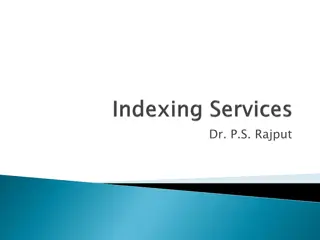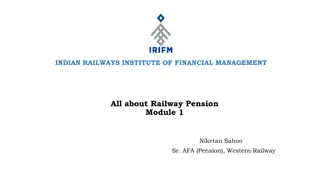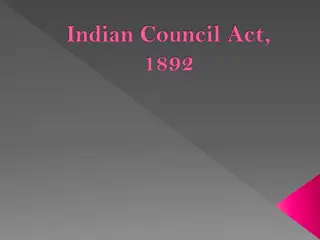Components of the Indian Financial System
A bank is a financial institution licensed to receive deposits and make loans. The Indian financial system comprises financial institutions, assets, services, and markets. It includes banking institutions, non-banking institutions, different types of money markets, and financial services offered in India such as banking services, insurance services, and investment services.
Download Presentation

Please find below an Image/Link to download the presentation.
The content on the website is provided AS IS for your information and personal use only. It may not be sold, licensed, or shared on other websites without obtaining consent from the author.If you encounter any issues during the download, it is possible that the publisher has removed the file from their server.
You are allowed to download the files provided on this website for personal or commercial use, subject to the condition that they are used lawfully. All files are the property of their respective owners.
The content on the website is provided AS IS for your information and personal use only. It may not be sold, licensed, or shared on other websites without obtaining consent from the author.
E N D
Presentation Transcript
A bank is a financial institution licensed to receive deposits and make loans. Banking is defined as the business activity of accepting and safeguarding money owned by other individuals and entities, and then lending out this money in order to conduct economic activities such as making profit or simply covering operating expenses.
There are four main components of the Indian Financial system. This includes: Financial Institutions Financial Assets Financial Services Financial Markets Let s discuss each component of the system in detail
The financial institutions can further be divided into two types: Banking Institutions or Depository Institutions This includes banks and other credit unions which collect money from the public against interest provided on the deposits made and lend that money to the ones in need Non Banking Institutions or Non Depository Institutions Insurance, mutual funds and brokerage companies fall under this category. They cannot ask for monetary deposits but sell financial products to their customers.
Call Money When a loan is granted for one day and is repaid on the second day, it is called call money. No collateral securities are required for this kind of transaction. Notice Money When a loan is granted for more than a day and for less than 14 days, it is called notice money. No collateral securities are required for this kind of transaction. Term Money When the maturity period of a deposit is beyond 14 days, it is called term money. Treasury Bills Also known as T-Bills, These are Government bonds or debt securities with maturity of less than a year. Buying a T-Bill means lending money to the Government. Commercial Paper It is an unsecured short-term debt instrument issued by corporations
The financial services in India include: Banking Services Any small or big service provided by banks like granting loan, depositing money, issuing debit/credit cards, opening accounts, etc. Insurance Services Services like issuing of insurance, selling policies, insurance undertaking and brokerages, etc are all a part of the Insurance services Investment Services management Foreign Exchange Services Exchange of currency, foreign exchange, etc. are a part of the Foreign exchange services It mostly includes asset
Capital market (a)Corporate Securities Market (b)Government Securities Market (c)Long Term Loan Market Money market Foreign exchange market Credit market
Scheduled commercial banks Regional rural banks Co-operative banks Payment banks and small financial banks
Early phase from 1786 to 1969 of Indian banks. Nationalisation of Indian Banks and up to 1991 prior to Indian banking sector Reforms. New phase of Indian Banking System with the advent of Indian Financial and Banking Sector Reforms after 1991.























